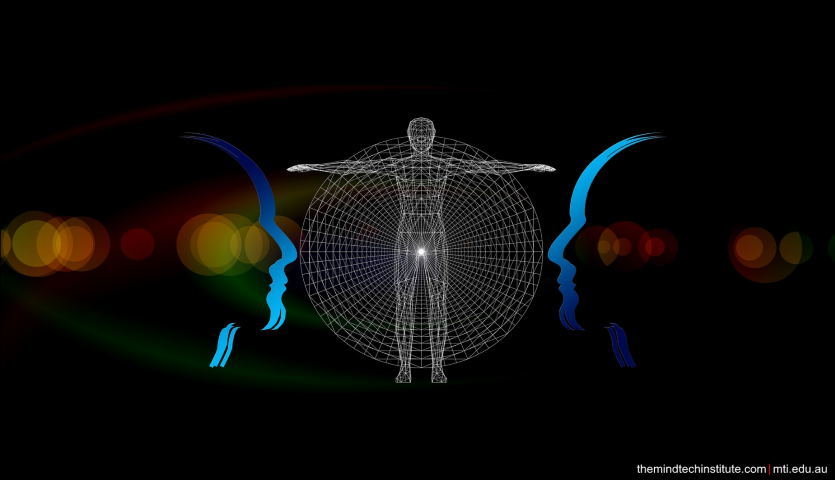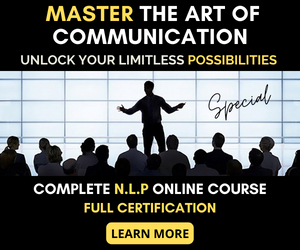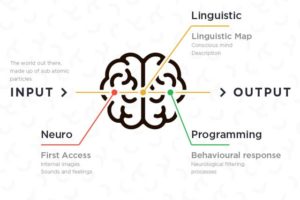
NLP Viewpoint: How to Decipher Someone’s Thoughts Through their Physiology
NLP Viewpoint: How to Decipher Someone’s Thoughts Through their Physiology
NLP Viewpoint: How to Decipher Someone’s Thoughts Through their Physiology… Are you curious about the intriguing aspect of determining people’s thoughts based on their physiology? While this topic may spark controversy among those unfamiliar with NLP (Neuro-Linguistic Programming), it is a subject that garners significant attention from students in The MindTech Institute’s NLP Practitioner program. The belief that everyone adheres to the same pattern and that body posture reflects only one meaning is a common misconception. The key lies not just in “what” someone is thinking, but rather in “how” they think. In this context, the “how” is both unspoken and undeniable. By paying attention to an individual’s physique, you can discern subtle signals that reveal their thought processes. We are not referring to the stereotypical body language often portrayed in movies; this is a deeper exploration of human communication.
According to the NLP Model of Communication, individuals rely on their five senses to construct Internal Representations (IRs) of the world around them. Humans possess a natural inclination to favor one representational system or modality over others. These systems allow us to access information and form our IRs. Consequently, some people primarily rely on their Visual representational system, while others lean towards the Auditory or Kinesthetic systems. These preferences often manifest in an individual’s body posture.
Let’s delve into the three major modalities of operation and explore how you can observe and identify them in others. This awareness will enable you to establish rapport by aligning with their representational system through the use of appropriate predicates and physiology.
1. Visual Modality
Individuals operating in the Visual modality typically exhibit an upright head and body posture, with their eyes directed upwards. They tend to breathe deeply from the top of their lungs. These individuals often sit forward in chairs, appearing more organized, neat, and well-groomed. They pay great attention to appearances and generally exude a sense of calmness. Visual individuals are usually adept spellers, and they find it easier to remember things through pictures or images. They are less prone to distractions from external noise. However, they may struggle to memorize spoken instructions and feel bored during lengthy verbal explanations. They prefer reading to being read to. When interacting with visual individuals, take note of phrases such as “see you later,” “I want to look at it,” “I want to focus on it,” “I want to observe it,” “be clear,” “foggy,” “imagine that,” “it seems to,” and “appear.”
2. Auditory Modality
Those who predominantly use the Auditory modality often exhibit sideways eye movements, with a slight downward gaze to the right (as observed from your perspective). Their inhalation and exhalation occur from the center of their chests. Auditory individuals tend to engage in self-talk and can easily be distracted by background sounds. When they speak, they often move their lips. They possess a knack for repeating what others say. Math and writing may pose more challenges for them, but they excel in spoken language. They enjoy listening to music and derive learning experiences from it. Memorization comes naturally to auditory individuals when they can follow a process, method, or set of instructions. To connect with auditory individuals effectively, employ phrases such as “listen,” “talk to,” “said,” “speak,” “hear,” as well as sounds like “good talking to you” and “sounds good.”
3. Kinesthetic (Feeling) Modality
Individuals favoring the Kinesthetic modality can be identified by the movement of their stomach as they breathe, inhaling deeply from the bottom of their lungs. They often exhibit a slouched posture and tend to walk and talk at a slower pace. To gain an understanding of their experiences, kinesthetic individuals tap into their feelings and emotions. They are highly responsive to physical stimuli and touch. When you observe them, their eyes will frequently shift downward and to the left. They prefer to engage in conversations while standing close to others and often initiate physical contact. Kinesthetic individuals are often physically active or involved in athletic pursuits. They learn best through hands-on experiences and practical involvement. Pay attention to phrases such as “feelings,” “get in contact,” “get in touch,” “hold,” “grip,” and “handle” when communicating with kinesthetic individuals.
These distinctive characteristics represent the primary modes of operation. Now, you may be wondering how to effectively engage with individuals who predominantly operate in one of these modalities. However, exploring this topic further warrants a separate article.
If you’re interested to learn more about such skills, check out The MindTech Institute Online NLP Training Bundle Package which includes NLP Practitioner and NLP Master Practitioner levels.





